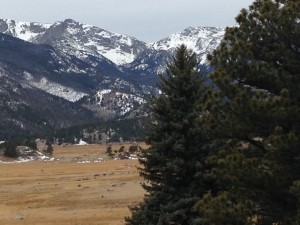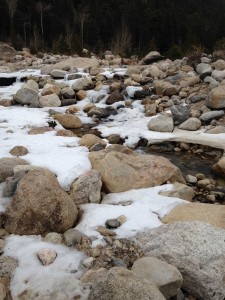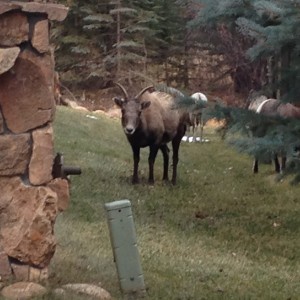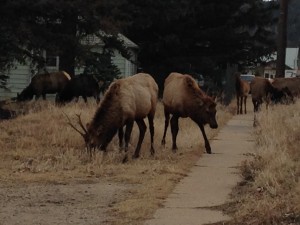Just an hour-and-a-half drive north of Denver, lies one of Mother Nature’s best possessions–Rocky Mountain National Park. Some 415 square miles were set aside a hundred years ago to protect and preserve its outstanding nature and scenery.
To get there, take Highway 36 northwest to Boulder; you’ll parallel the flatirons, mountains shaped like your great-grandmother’s iron. These provide great hiking and rock climbing. In the distance, you’ll see the National Center Atmospheric Research Center (NCAR); there, staff record earthquakes and hurricane strikes around the world. You also can’t miss seeing the red-roofed buildings in the boulder Valley that belong to the University of Colorado.
Once you’ve navigated your way through Boulder, the scenery escalates in beauty as you drive through the foothills of national forest land. The landscape offers numerous pine trees, long golden grasses, grazing horses, and massive rock formations. Outside Lyons, a small mountain town, turn west onto Ute Highway. Here, the rock formations are a ruddy red. You’ll continue to be impressed as you drive through mountains on both sides of the road which are dotted with aspen trees and pines; you’re in the Roosevelt National Forest and taller, snow-peaked mountains jut up in the distance. They are jaw-dropping beautiful!
Entering Rocky Mountain National Park is simple. Several rangers are on hand to collect a modest car fee. The park is a great place to look for wild life while also admiring the mountain scenery. We stopped at one of the many roadside viewing areas to look out upon Morain Park, where rocks alongside the morain show evidence of the former Thompson Glacier and how its melting shoved the rocks around. We hiked Deer Mountain Trail, a well-graded mountain trail, drove as far as we could along Trail Ridge, and rock climbed along the Alluvial Fan. A red sign posted there, warns climbers that mountain rocks are slippery and falling into a stream can be deadly with its strong mountain currents.


Rocky Mountain National Park boasts an alpine tundra biome and hundreds of species of birds and animals. Did we see any wild life during our visit? Yes–right outside the park, we saw several big horn sheep grazing and a group of elk in the front yard of an Estes Park home.


–
Also, take some time to tour Estes Park; this town is full of quaint shops and trendy restaurants. Try a different route back to Denver, equally scenic. Travel Highway 36 to Highway 7 to Highway 72. This route takes you through Indian Peaks Wilderness and more mountains and stellar views of contrasting mountains and valleys–especially vivid is a close-up look of Long’s Peak. Another advantage of this alternate route is a glimpse of the gorgeous St. Malo Center and a drive through the mountain town of Nederland.
Here’s a prediction: as you head back to Denver after a day in Rocky Mountain National Park, you’ll make a mental note to revisit the park another time–you’ll vow to spend a lot more time there on your second visit!
